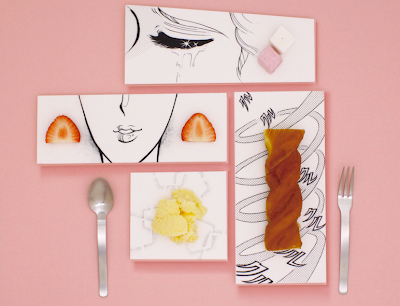An interesting,
inspiring research trip in Manchester.
On Friday we went to the Imperial War Museum
to see how the museum displays many different
wars with some fantastic and emotional stories changing the way of life
after W.W.II broke out and the Whitworth Art Gallery to learn how the gallery demonstrated
the use of the same them by David Hockney and William Hogarth more tan two
centuries apart.
First
of all Stewart introduced the museum building, which was designed by architect Daniel
Libeskind. The design concept
of the building is that of a globe, which has been shattered into fragments and
then reassembled; therefore, the first impression of IWM was unsettling so when
I walked through it, realized that the unsettled design used as a metaphor the for the damage of W.W.II.
When it comes
to the exhibition, it is a fascinating introduction
for people and keeps all ages interested because it used some interactive
exhibits to get people involved in the sights and smells of war.
Then we visited the Whitworth Art Gallery to see how the gallery displays different
collections-- David Hockney’s entire print
series A Rake’s Progress (1961-1963) and William Hogarth’s eighteenth-century
series of the same title-- into an
exhibition. One collection is a semi-autobiographical story about
Hockney, the ‘rake’, and the down and outs of his life in New York in the early
1960s. Its format, story and numbering system are based on William Hogarth’s
1735 suite of prints of the same title. Another collection is about Hogarth’s
18th century prints illustrate the decline and fall of Tom Rakewell. Due to a clear way of
exhibition, people not only can understand the difference between two different
times of works from the same them but also can enjoy the atmosphere with ease.
Viewing
both exhibitions prompts me to think about my project. In order to present a
good twist from traditional drawing style to the contemporary design style, I
have to learn how both of museum display the way of the exhibition.






